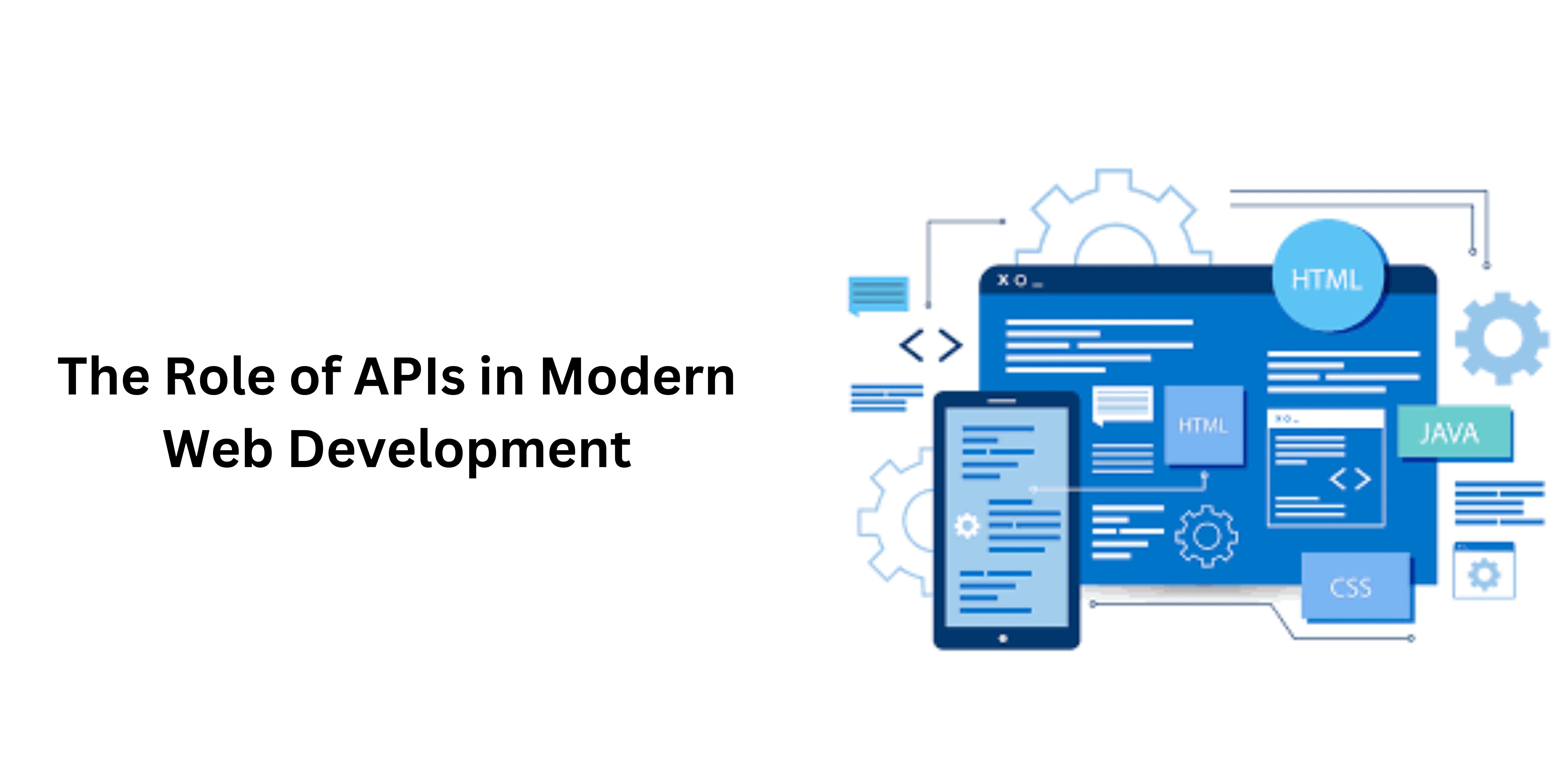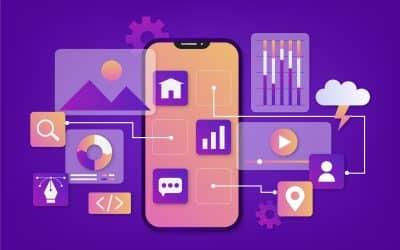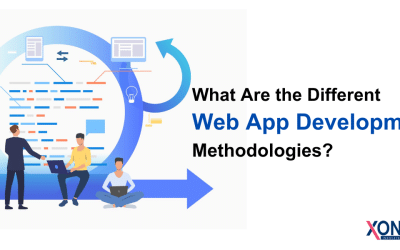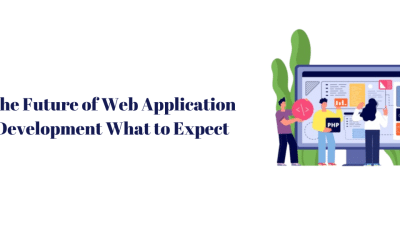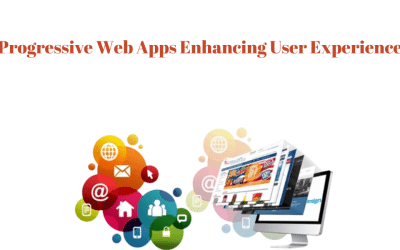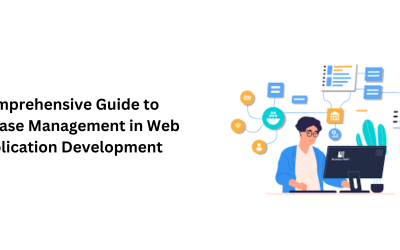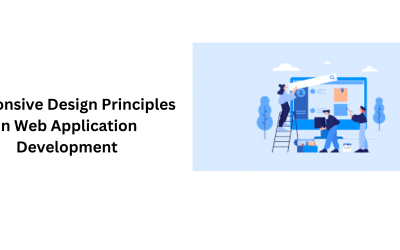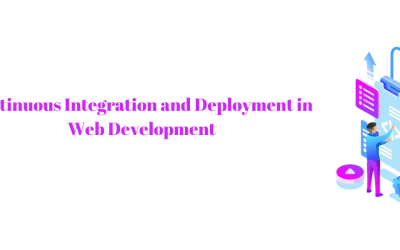In the rapidly evolving landscape of modern web development, Application Programming Interfaces (APIs) play a pivotal role in facilitating seamless communication and interaction between different software applications. APIs serve as the intermediary that enables the exchange of data and functionality, fostering connectivity between disparate systems, platforms, and services. This interconnected web of APIs empowers developers to create dynamic and feature-rich applications by leveraging pre-existing functionalities without the need to reinvent the wheel.
This introduction aims to explore the multifaceted role of APIs in contemporary web development, delving into their evolution, architecture, security considerations, and various implementation strategies. From RESTful APIs to GraphQL, the discussion will encompass the diverse approaches to API design, highlighting their respective strengths and use cases.
Furthermore, this exploration will shed light on emerging trends, challenges, and the transformative impact of APIs on the ever-expanding digital ecosystem. As we embark on this journey, the significance of APIs in shaping the interconnected and efficient web of today becomes increasingly apparent.
Evolution of Web Development and APIs
The evolution of web development has been intrinsically linked to the transformative role played by Application Programming Interfaces (APIs). In the early stages of the internet, static web pages dominated the landscape, offering limited interactivity. However, as the demand for dynamic and interactive web applications grew, developers sought ways to enhance connectivity between different software systems.
This led to the emergence of APIs, which acted as bridges, facilitating seamless data exchange and interaction. The transition from monolithic architectures to more modular and scalable structures further underscored the importance of APIs. With the advent of Representational State Transfer (REST) in the early 2000s, a standardized architectural style for web services emerged, providing a foundation for building robust and scalable APIs. Subsequently, GraphQL, with its flexible query language, offered an alternative approach to data retrieval, challenging the dominance of RESTful APIs.
The proliferation of mobile applications, cloud computing, and the rise of microservices further accelerated the integration of APIs into the fabric of web app development. Today, APIs not only enable the integration of diverse functionalities but also empower developers to create innovative and interconnected digital experiences. The evolution of web development and APIs reflects a continuous quest for efficiency, scalability, and adaptability, shaping the contemporary digital landscape and laying the groundwork for future innovations in the ever-evolving realm of technology.
Understanding the Concept of APIs
At its core, the concept of Application Programming Interfaces (APIs) encompasses a set of protocols, routines, and tools that allow different software applications to communicate and interact with each other. APIs serve as intermediaries, facilitating the seamless exchange of data and functionality between disparate systems, enabling developers to leverage existing services and build upon them.
Essentially, APIs provide a standardized way for applications to request and receive information or perform specific actions, abstracting the underlying complexity of the systems involved. This abstraction layer not only streamlines development but also enhances interoperability, as applications can communicate without needing to understand the intricate details of each other’s internal workings. APIs can take various forms, with Representational State Transfer (REST) and GraphQL being prominent examples. RESTful APIs use standard HTTP methods for communication and are widely adopted for their simplicity and scalability. On the other hand, GraphQL offers a more flexible approach, allowing clients to request precisely the data they need, minimizing over-fetching and under-fetching of information.
Understanding APIs involves grasping the intricacies of their endpoints, requests, and responses, as well as comprehending authentication mechanisms and data formats. As a fundamental building block in modern software development, a clear comprehension of the concept of APIs is indispensable for developers seeking to create interconnected, efficient, and feature-rich applications in the dynamic landscape of contemporary technology.
Key Components of API Architecture
The architecture of Application Programming Interfaces (APIs) encompasses a set of key components that collectively form the foundation for seamless communication and integration between different software systems. At its core, an API consists of endpoints, which are specific URLs or URIs representing the locations where API requests can be made. These endpoints define the operations that can be performed, such as retrieving data or updating information. The communication between clients and servers is facilitated by HTTP methods, such as GET, POST, PUT, and DELETE, each serving a distinct purpose in interacting with the API.
Data is typically exchanged in a standardized format, with JSON (JavaScript Object Notation) being a prevalent choice due to its simplicity and widespread support. Authentication mechanisms play a crucial role in API security, ensuring that only authorized users or applications can access protected resources. Common methods include API keys, OAuth tokens, and JWT (JSON Web Token) authentication. Rate limiting is another essential component, preventing abuse or overuse of the API by imposing restrictions on the number of requests a client can make within a specified time frame.
Additionally, API documentation acts as a critical component by providing developers with comprehensive information on how to use the API, including available endpoints, request parameters, and expected responses. Overall, a well-designed API architecture considers these key components to ensure efficiency, security, and ease of use, laying the groundwork for effective communication and collaboration between diverse software systems in the dynamic landscape of modern technology.
RESTful APIs vs. GraphQL: A Comparative Analysis
The debate between RESTful APIs and GraphQL represents a pivotal discussion in the realm of modern web development, each offering distinct advantages and considerations. Representational State Transfer (REST) has long been the go-to architectural style for designing networked applications, emphasizing simplicity, scalability, and statelessness. RESTful APIs leverage standard HTTP methods such as GET, POST, PUT, and DELETE, with each endpoint representing a resource and supporting CRUD (Create, Read, Update, Delete) operations.
This simplicity makes REST easy to understand, implement, and integrate, fostering widespread adoption. However, RESTful APIs can suffer from over-fetching or under-fetching of data, as clients receive a fixed set of information with each request, potentially leading to inefficient data retrieval.
In contrast, GraphQL offers a more flexible and efficient approach to data querying. Developed by Facebook, GraphQL enables clients to request precisely the data they need, eliminating the issue of over-fetching or under-fetching. Clients specify the structure of the response, reducing the amount of data transferred over the network and enhancing performance. Furthermore, GraphQL consolidates multiple RESTful endpoints into a single endpoint, streamlining the overall architecture. Despite these benefits, GraphQL introduces a steeper learning curve and may be perceived as overkill for simpler applications.
The choice between RESTful APIs and GraphQL depends on the specific requirements of the project. REST remains a reliable and widely adopted solution for many use cases, especially when simplicity and standardization are paramount. Meanwhile, GraphQL excels in scenarios where fine-grained control over data retrieval and reduced network overhead are critical considerations, offering web app developers the flexibility needed to optimize performance in more complex, data-intensive applications. Ultimately, the comparative analysis of RESTful APIs and GraphQL underscores the importance of selecting the right technology based on the specific needs, complexities, and performance considerations of a given project.
The Significance of API Documentation
API documentation stands as a cornerstone in modern software development, playing a pivotal role in ensuring the effective utilization, integration, and collaboration among developers, both internally and externally. Comprehensive and well-structured API documentation serves as a vital resource, providing developers with the necessary guidance to understand, implement, and leverage the functionalities offered by an API.
It acts as a clear roadmap, offering insights into available endpoints, request parameters, response formats, and authentication mechanisms. Documentation goes beyond mere technical specifications, often including illustrative examples, use cases, and best practices. This wealth of information significantly reduces the learning curve for developers looking to integrate a new API into their projects. Additionally, robust documentation contributes to the overall usability of the API, fostering a positive developer experience and accelerating the development process. Moreover, API documentation plays a critical role in collaborative development efforts, facilitating effective communication between different teams or external developers.
In an era of distributed development, where teams may be geographically dispersed, clear and accessible documentation becomes even more indispensable. It serves as a living reference, evolving alongside the API itself, and can act as a foundational element for maintaining version control and ensuring consistency across different iterations. Ultimately, the significance of API documentation lies not only in its role as a technical reference but also in its broader impact on fostering collaboration, reducing barriers to entry, and enhancing the overall efficiency and success of software development projects.
Exploring API Endpoints and Requests
Exploring API endpoints and understanding the intricacies of crafting requests form a fundamental aspect of effective utilization in web development. API endpoints serve as specific URLs or URIs that define the entry points for interacting with an API. Each endpoint corresponds to a distinct operation, such as retrieving data, updating information, or executing specific actions.
When crafting requests to these endpoints, developers utilize HTTP methods, including GET for retrieving data, POST for creating new resources, PUT for updating existing resources, and DELETE for removing resources. The structure of these requests, often accompanied by parameters or payloads, determines the nature and scope of the interaction with the API. Exploring API endpoints involves delving into the API’s documentation to identify available endpoints, understanding their functionalities, and mastering the expected request formats.
Additionally, developers need to consider the importance of proper authentication, ensuring that requests are authorized and secure. As the interaction with API endpoints forms the core of communication between applications, developers must be adept at constructing well-formed requests, handling responses effectively, and troubleshooting issues that may arise during the integration process. This exploration of API endpoints and requests is essential not only for extracting and manipulating data but also for creating dynamic, responsive, and interconnected applications in the ever-evolving landscape of web development.
API Authentication and Security Measures
API authentication and security measures are paramount considerations in the design and implementation of robust and reliable web services. Authentication, the process of verifying the identity of clients or users, ensures that only authorized entities can access protected resources. Common methods include API keys, where a unique identifier is provided to the client, OAuth, which enables secure third-party access, and JSON Web Tokens (JWT), providing a token-based approach for authentication. Beyond authentication, a comprehensive security strategy involves encrypting data during transmission using protocols like HTTPS, safeguarding against eavesdropping and man-in-the-middle attacks.
Rate limiting and throttling mechanisms prevent abuse by restricting the number of requests a client can make within a specified timeframe, mitigating the risk of denial-of-service attacks. Additionally, implementing proper input validation, sanitization, and output encoding guards against injection attacks and other forms of malicious exploits. Regular security audits, monitoring, and staying informed about emerging threats are crucial components of maintaining a secure API ecosystem.
As APIs increasingly serve as the backbone of interconnected digital services, ensuring robust authentication and security measures is not only a best practice but also a critical aspect of fostering trust among developers, users, and stakeholders in the dynamic and ever-evolving landscape of web development.
Cross-Origin Resource Sharing (CORS) in Web Development
Cross-Origin Resource Sharing (CORS) is a crucial mechanism in web development that addresses security concerns related to cross-origin requests and enhances the interoperability of web applications. In the context of the same-origin policy, browsers restrict web pages from making requests to a different domain than the one that served the original web page.
CORS allows servers to specify which origins are permitted to access their resources, thereby enabling secure cross-origin data sharing. When a web page makes a cross-origin request, the browser sends an HTTP request with an “Origin” header indicating the origin of the requesting site. The server, equipped with CORS headers, responds by indicating whether it allows or denies the request based on its configured policies. These headers include “Access-Control-Allow-Origin,” specifying the allowed origins, and other directives governing the types of HTTP methods and headers permitted.
CORS is instrumental in facilitating the development of rich, distributed web applications that leverage resources from diverse origins, such as APIs, fonts, and images. However, it requires careful configuration to strike a balance between security and flexibility. As web development increasingly involves integration with third-party services and APIs, understanding and implementing CORS correctly becomes crucial for ensuring a seamless and secure user experience across different origins in the interconnected landscape of the World Wide Web.
Real-life Examples of APIs in Action
APIs have become ubiquitous in the digital landscape, facilitating seamless communication and integration across a myriad of applications and services. In the realm of social media, platforms like Twitter, Facebook, and Instagram expose APIs that allow developers to retrieve user data, post updates, and integrate social features into third-party applications.
E-commerce giants like Amazon and Shopify provide APIs for product listings, order processing, and payment transactions, empowering developers to build custom storefronts and streamline online shopping experiences. Payment gateways, such as Stripe and PayPal, expose APIs that enable secure and flexible processing of online transactions within various applications. Additionally, mapping services like Google Maps offer APIs that empower developers to incorporate interactive maps, geolocation, and route planning into their applications.
Weather APIs, exemplified by services like OpenWeatherMap, provide real-time weather data, allowing developers to integrate dynamic weather information into their applications. Cloud services, including Amazon Web Services (AWS) and Microsoft Azure, expose APIs for scalable computing, storage, and machine learning, enabling developers to build and deploy applications without the need for extensive infrastructure management. These examples merely scratch the surface of the extensive role APIs play in our digital lives, showcasing their versatility and the transformative impact they have on enhancing functionality, connectivity, and user experiences across a diverse range of industries and applications.
API Integration in Front-End Development
API integration in front-end development is a cornerstone in building dynamic and interactive web applications development that leverage external data and services. Front-end developers often interact with APIs to fetch and display real-time information without the need for page reloads, creating a seamless and responsive user experience. Commonly, JavaScript, especially with frameworks like React, Vue.js, or Angular, is employed to make asynchronous requests to APIs using technologies such as XMLHttpRequest or the more modern Fetch API.
These requests allow the front-end to communicate with back-end servers or third-party services, retrieving data in formats like JSON or XML. Front-end developers then parse and manipulate this data, updating the user interface dynamically. Authentication mechanisms, such as API keys or OAuth tokens, ensure secure access to protected resources. Asynchronous JavaScript and XML (AJAX) has historically been a key technique for API integration, but modern practices increasingly favor using Fetch API for its simplicity and native support for Promises.
Front-end frameworks often provide convenient methods or libraries for handling API requests, further streamlining integration. With the rise of Single Page Applications (SPAs), where much of the application logic resides on the client side, API integration has become integral to delivering dynamic, data-driven, and responsive user interfaces. Front-end developers must adeptly manage API calls, handle responses, and update the UI efficiently to create engaging and feature-rich web applications in the ever-evolving landscape of front-end development.
Back-End Development and API Implementation
In the realm of back-end development, the implementation of Application Programming Interfaces (APIs) plays a pivotal role in enabling communication between the server-side logic and various client applications. Back-end developers design and implement APIs to expose specific functionalities and data resources, allowing seamless interaction with front-end applications or other services.
These APIs define the rules and protocols for how different software components should communicate, often utilizing standards such as REST (Representational State Transfer) or GraphQL. Back-end developers create endpoints that represent specific operations or resources, determining the methods allowed, data formats, and authentication requirements. Data validation and security measures are paramount during API implementation to safeguard against potential vulnerabilities and ensure the integrity of data exchanges. Additionally, back-end developers handle business logic, database interactions, and perform necessary computations before delivering a well-structured and secure response to client applications.
Effective API implementation requires adherence to best practices, such as proper error handling, versioning strategies, and documentation for clear and comprehensive guidance to developers using the API. With the advent of microservices architectures, API implementation becomes even more critical, serving as the linchpin for communication and coordination among distributed services.
A well-designed and efficiently implemented API not only enhances the interoperability of the entire system but also facilitates scalability, maintainability, and future extensibility in the complex landscape of back-end development. Ultimately, back-end developers shoulder the responsibility of architecting and implementing APIs that act as the backbone for seamless data exchange and functionality across the diverse array of applications in modern software ecosystems.
The Role of APIs in Microservices Architecture
In the paradigm of microservices architecture, Application Programming Interfaces (APIs) play a pivotal and transformative role, serving as the linchpin for seamless communication, interoperability, and coordination among independent and distributed services. Microservices are individual, loosely coupled components that encapsulate specific business functionalities, and APIs act as the standardized means for these microservices to interact.
APIs facilitate the exchange of data and functionalities, enabling each microservice to operate independently while collaborating with others to fulfill complex business requirements. Through well-defined API contracts, microservices can communicate without needing deep knowledge of each other’s internal implementations, promoting modularization and scalability. This decoupling allows for independent development, deployment, and scaling of microservices, fostering agility and flexibility in responding to changing business needs. API gateways often serve as centralized entry points, managing the communication flow, handling authentication, and enforcing security policies across microservices.
Moreover, APIs enable the orchestration of microservices, allowing developers to compose diverse functionalities into cohesive and feature-rich applications. The adoption of RESTful APIs or GraphQL within microservices architectures provides standardization and flexibility, accommodating the diverse communication patterns required by microservices. However, managing the complexity of interactions and ensuring consistency in API design and versioning are crucial challenges in this architectural approach. The role of APIs in microservices architecture extends beyond mere connectivity; it forms the foundation for creating modular, scalable, and resilient systems that can evolve independently, fostering a dynamic and efficient ecosystem in the contemporary landscape of distributed and scalable software development.
API Versioning: Best Practices and Strategies
API versioning is a critical aspect of API design, ensuring compatibility, flexibility, and smooth evolution in the dynamic landscape of software development. Adopting best practices and strategies in API versioning is essential for maintaining a stable and predictable interface while accommodating necessary changes and improvements over time. One common approach is the use of URI versioning, where the version is included directly in the API endpoint (e.g., “/v1/resource”). This method provides clarity and simplicity but may clutter the URI space. Another strategy involves incorporating the version into the request header, separating it from the URI and offering a cleaner approach.
Accept header versioning allows clients to specify the desired API version in the HTTP header, providing flexibility and reducing the impact on the URI structure. Additionally, using a default version when the client doesn’t specify one can help manage backward compatibility and ease the transition for existing users. Semantic versioning (SemVer) is widely adopted, utilizing a three-part version number (e.g., 1.2.3) to signify major, minor, and patch changes, aiding developers in understanding the nature and impact of updates.
Timely and clear documentation is crucial in communicating version changes, deprecations, and migration steps to developers, fostering transparency and mitigating disruptions. Choosing the appropriate versioning strategy depends on factors such as the project’s scope, team preferences, and the impact on existing users. Implementing versioning best practices ensures that APIs can evolve harmoniously, striking a balance between innovation and stability in the ever-evolving landscape of software development.
API Testing and Quality Assurance
API testing and quality assurance are integral components of ensuring the reliability, functionality, and performance of Application Programming Interfaces (APIs) in modern software development. API testing involves verifying that the API functions as expected, adhering to its defined specifications and requirements. This encompasses various types of testing, including unit testing, integration testing, functional testing, and performance testing.
Unit testing focuses on testing individual components or functions within the API in isolation, ensuring that each unit behaves as intended. Integration testing verifies the interactions between different components or modules of the API, validating data flow and communication between them. Functional testing examines the API’s behavior against expected outcomes, testing its functionality, inputs, outputs, and error handling.
Performance testing evaluates the API’s responsiveness, scalability, and reliability under various load conditions, ensuring that it can handle expected traffic levels efficiently. Quality assurance in API development involves implementing best practices in API design, documentation, and security, as well as ensuring compliance with industry standards and regulations. Comprehensive API testing and quality assurance processes help identify and address issues early in the development lifecycle, reducing the risk of bugs, security vulnerabilities, and performance bottlenecks.
Automated testing frameworks and tools, such as Postman, SoapUI, and Jest, streamline the testing process, enabling developers to execute tests quickly and efficiently. Additionally, continuous integration and continuous deployment (CI/CD) pipelines integrate API testing into the development workflow, ensuring that changes are thoroughly tested before deployment to production environments. By prioritizing API testing and quality assurance, developers can deliver robust, reliable, and high-performing APIs that meet the needs of users and stakeholders in the dynamic and competitive landscape of software development.
Handling Errors and Exceptional Cases in APIs
Handling errors and exceptional cases in APIs is a critical aspect of ensuring robust and reliable software interactions, fostering a positive user experience, and providing clear diagnostic information for developers. Effective error handling requires the definition and implementation of consistent error response formats, typically in JSON, containing essential details such as error codes, messages, and additional information for debugging. HTTP status codes play a pivotal role in signaling the success or failure of API requests.
While 2xx status codes indicate success, 4xx codes signify client errors, and 5xx codes indicate server errors. For exceptional cases, APIs should provide informative and user-friendly error messages to guide developers in troubleshooting and resolving issues. Properly documented error responses contribute to the overall usability of the API, reducing development time and enhancing the user experience.
Additionally, APIs should implement rate limiting and throttling mechanisms to prevent abuse and ensure fair usage. Logging and monitoring are essential components for capturing and analyzing errors in real-time, enabling proactive issue resolution and continuous improvement. By adopting a comprehensive approach to error handling, APIs can gracefully manage unexpected scenarios, such as invalid inputs, server downtimes, or network disruptions, thereby enhancing the overall reliability and resilience of the system in the dynamic landscape of modern web app development.
Webhooks: Enhancing Real-time Communication with APIs
Webhooks represent a powerful mechanism in modern web development, enhancing real-time communication between applications and facilitating seamless data exchange. Unlike traditional APIs, where clients initiate requests to fetch information, webhooks enable servers to push data to predefined endpoints on client servers.
This event-driven architecture is particularly valuable for scenarios requiring immediate updates or notifications, such as real-time messaging, monitoring, and collaboration applications. The webhook setup involves registering an endpoint with a provider, which subsequently triggers a callback when a relevant event occurs. This event-driven approach minimizes latency, enabling applications to react promptly to changes. Common use cases include receiving notifications about new content, updates, or changes in external systems.
Webhooks find extensive application in e-commerce for order updates, in chat applications for real-time messaging, and in continuous integration pipelines for triggering automated builds and deployments. Implementing security measures, such as payload validation and using secure protocols like HTTPS, is crucial to protect against potential vulnerabilities and unauthorized access. While webhooks enhance the efficiency of real-time communication, developers need to handle scenarios where endpoints may be temporarily unavailable or unresponsive, ensuring robustness in the face of intermittent network issues.
In the dynamic landscape of web development, webhooks stand as a valuable tool, providing a responsive and event-driven paradigm that significantly contributes to the creation of dynamic, interactive, and real-time applications.
API Rate Limiting and Throttling Mechanisms
API rate limiting and throttling mechanisms are crucial components in managing and controlling the flow of requests to an API, ensuring optimal performance, preventing abuse, and maintaining fair usage policies. Rate limiting involves placing constraints on the number of requests a client can make within a specified time period. By setting limits on the frequency of API calls, rate limiting prevents users or applications from overwhelming the server, conserving resources and enhancing overall system stability.
Throttling, on the other hand, regulates the rate at which requests are processed or served. It introduces delays between requests when the rate surpasses predefined thresholds, preventing sudden spikes in traffic and promoting a more controlled flow of data. These mechanisms are essential for protecting against denial-of-service attacks, managing server resources efficiently, and ensuring a consistent and reliable experience for all users. Rate limiting and throttling are often implemented with HTTP status codes, such as 429 Too Many Requests, indicating when limits are exceeded. API providers commonly use tokens, API keys, or OAuth tokens as credentials for identification and tracking usage, enabling personalized rate limits based on user roles or subscription plans.
Effective implementation of these mechanisms requires careful consideration of the specific needs of the API, balancing the goals of preventing abuse while accommodating the legitimate needs of users and developers. In the dynamic landscape of web development, API rate limiting and throttling play a pivotal role in maintaining the stability, security, and equitable access to resources in the interconnected digital ecosystem.
Serverless Architecture and APIs
Serverless architecture, a paradigm in cloud computing, has transformative implications for API development and deployment, redefining how developers build and scale applications. Contrary to traditional server-based models, serverless architecture abstracts server management and scaling tasks away from developers, allowing them to focus solely on writing code.
This approach is particularly influential in API development, as it facilitates the creation of microservices without the need to provision or manage servers explicitly. Serverless platforms, such as AWS Lambda, Azure Functions, or Google Cloud Functions, execute functions in response to events or API triggers, offering a pay-as-you-go model where users are billed based on actual usage. APIs in serverless architectures are often implemented as serverless functions, enabling developers to deploy and scale APIs rapidly without the complexities of server management.
This model aligns well with the principles of microservices, enabling web app developers to build modular, event-driven APIs that seamlessly integrate with other serverless services. Additionally, serverless architectures provide automatic scaling, reducing costs and eliminating the need for capacity planning. Despite its advantages, serverless architecture introduces considerations such as stateless execution, limited execution time, and potential cold start latency. However, as the serverless ecosystem matures, solutions and best practices are continually evolving to address these challenges, making serverless an increasingly attractive option for agile and scalable API development in the modern landscape of cloud computing.
API Analytics and Performance Monitoring
API analytics and performance monitoring are integral components in the life cycle of modern web development, providing insights into the usage, efficiency, and reliability of Application Programming Interfaces (APIs). Analytics tools offer developers and stakeholders a comprehensive view of API usage patterns, helping identify popular endpoints, peak usage times, and potential bottlenecks.
This data-driven approach aids in making informed decisions about scaling, optimizing, and enhancing the overall user experience. Performance monitoring, on the other hand, involves tracking key metrics such as response times, error rates, and resource utilization to ensure that APIs meet specified service-level objectives. Monitoring tools provide real-time visibility into the health and performance of APIs, facilitating the early detection and resolution of issues that could impact system reliability. Additionally, logging and tracing mechanisms contribute to diagnosing and troubleshooting problems effectively.
By leveraging analytics and performance monitoring, developers can proactively address performance bottlenecks, optimize resource allocation, and enhance overall system resilience. These practices not only contribute to a seamless user experience but also empower organizations to align their API strategies with business goals, ensuring that APIs are responsive, scalable, and aligned with the dynamic demands of the ever-evolving landscape of web development.
API Monetization Strategies in Modern Web Development
API monetization strategies have become essential in the landscape of modern web development, providing organizations with avenues to generate revenue by offering their APIs as products or services. One prevalent approach is the freemium model, where basic access to the API is provided for free, enticing developers to explore and integrate the service.
Premium tiers, offering enhanced features, higher usage limits, or dedicated support, are then monetized through subscription fees. Usage-based pricing is another common strategy, where organizations charge based on the volume of API requests or the resources consumed. This approach aligns costs with usage and allows for scalability. Developer-centric models involve charging based on the number of developers or teams accessing the API, catering to organizations with varying needs and sizes. Moreover, tiered pricing plans offer different levels of service and capabilities, accommodating a diverse range of users from individual developers to enterprise clients.
API marketplaces and partner programs facilitate collaboration and revenue-sharing arrangements, allowing third-party developers to build and monetize applications using the API. Organizations may also explore strategic partnerships, joint ventures, or licensing agreements to monetize their APIs. Effective API documentation, clear pricing models, and developer support are crucial components of successful API monetization strategies, fostering transparency and trust among users. As APIs continue to be integral to digital ecosystems, organizations are increasingly adopting innovative and flexible monetization approaches to capitalize on the value of their APIs in the competitive and evolving landscape of web development.
OpenAPI Specification and Standardization
The OpenAPI Specification, an industry-standard language-agnostic interface description for RESTful APIs, has emerged as a key tool for enhancing interoperability and promoting standardization in modern web development. Utilized to document, design, and consume APIs, OpenAPI Specification (OAS) facilitates clear communication between developers, clients, and other stakeholders involved in the API ecosystem.
It provides a structured way to describe API endpoints, request/response formats, authentication methods, and other essential details, fostering consistency and reducing ambiguity. One of the notable features of OAS is its machine-readable format, often expressed in JSON or YAML, enabling automatic generation of interactive API documentation, client libraries, and server stubs. This not only expedites development but also ensures that all parties involved are working with a shared understanding of the API’s structure and capabilities.
Standardizing API documentation with OpenAPI Specification promotes collaboration across development teams and enables the seamless integration of diverse services in a heterogeneous technology landscape.
The OpenAPI Initiative, an industry consortium, oversees the evolution and development of the OpenAPI Specification, ensuring its relevance and adaptability to emerging technologies. The widespread adoption of OAS has further fueled the growth of API ecosystems, allowing developers to confidently explore, integrate, and innovate upon existing APIs with reduced friction. As APIs continue to be pivotal in the digital era, the OpenAPI Specification stands as a crucial instrument, driving standardization, fostering collaboration, and contributing to the evolution of a unified and interoperable web development landscape.
API Governance: Ensuring Consistency and Compliance
API governance stands as a critical discipline in modern web development, ensuring the consistency, compliance, and optimal functioning of APIs across an organization. As businesses increasingly rely on APIs to enable digital transformation and connectivity, governance becomes essential for managing the diverse array of APIs effectively.
A well-established API governance framework encompasses guidelines, policies, and best practices that dictate the design, development, and usage of APIs within an organization. Consistency in API design conventions, naming conventions, and documentation fosters a cohesive and standardized approach, simplifying the integration process and enhancing collaboration among development teams. Compliance with industry standards, security protocols, and regulatory requirements is imperative to mitigate risks and protect sensitive data. API governance also extends to versioning strategies, ensuring backward compatibility and smooth transitions when updates are rolled out.
Centralized management tools and platforms facilitate the enforcement of governance policies, providing visibility into API usage, performance metrics, and potential security vulnerabilities. Effective governance encourages reuse of existing APIs, reduces redundancy, and promotes a culture of transparency and accountability. Furthermore, it facilitates the establishment of key performance indicators (KPIs) to measure the success and impact of APIs, guiding organizations in optimizing their API strategies for business goals. In essence, API governance acts as a guiding framework, balancing the need for innovation and agility with the imperative of ensuring consistency, compliance, and reliability in the rapidly evolving landscape of web development.
Challenges and Solutions in API Development
API development, while pivotal in enabling seamless communication and integration across diverse applications, presents various challenges that require strategic solutions to ensure optimal functionality and performance. One primary challenge is maintaining backward compatibility during version updates. Organizations often encounter the dilemma of introducing new features or improvements without disrupting existing users. Solution lies in adopting versioning strategies, such as semantic versioning, that clearly communicate the nature of changes and provide developers with the information needed for a smooth transition.
Another challenge is ensuring robust security measures to protect sensitive data and prevent unauthorized access. Implementing secure authentication mechanisms, employing encryption protocols, and regularly auditing for vulnerabilities address these concerns. Handling diverse data formats and ensuring compatibility across different systems is a common obstacle. The adoption of standard data formats, like JSON or XML, and providing clear documentation facilitate interoperability. Scalability poses challenges as APIs need to accommodate varying loads and usage patterns.
Implementing effective caching mechanisms, employing scalable infrastructure, and optimizing code contribute to scalable API architectures. Furthermore, evolving compliance and regulatory requirements necessitate ongoing efforts to ensure APIs adhere to industry standards and legal frameworks. A proactive approach to API governance, regular security audits, and staying informed about industry best practices address these compliance challenges. By addressing these challenges through a combination of strategic planning, adherence to best practices, and ongoing monitoring, organizations can build robust and future-proof APIs that meet the demands of the dynamic landscape of web development.
Future Trends and Innovations in API Technology
The future of API technology promises a myriad of trends and innovations that will reshape the landscape of web development, enabling more seamless and efficient interactions between applications. One notable trend is the increased adoption of GraphQL, offering a more flexible and efficient way to query and manipulate data. GraphQL allows clients to request precisely the data they need, minimizing over-fetching and under-fetching of information, thereby optimizing performance and bandwidth usage.
Another significant trend is the rise of event-driven architectures and serverless computing. Event-driven APIs, facilitated by technologies like Apache Kafka or AWS EventBridge, enable real-time communication between services, enhancing responsiveness and scalability. Serverless computing abstracts server management, allowing developers to focus solely on writing code without the burden of infrastructure maintenance. As the Internet of Things (IoT) continues to expand, APIs will play a crucial role in connecting and orchestrating interactions between diverse devices and systems.
The emergence of gRPC, a high-performance remote procedure call (RPC) framework developed by Google, is poised to revolutionize API communication with its efficiency, speed, and support for multiple programming languages. Additionally, the future will likely see increased emphasis on AI-driven APIs, enabling applications to leverage machine learning models and cognitive services for enhanced functionality. As the digital landscape evolves, these trends and innovations in API technology will collectively contribute to a more dynamic, interconnected, and intelligent ecosystem in the realm of web development.
The Key Takeaway
In conclusion, the role of APIs in modern web app development is undeniably transformative, acting as the linchpin for seamless communication, integration, and innovation across diverse applications and services. From RESTful APIs to GraphQL, the evolution of API technologies reflects an ongoing commitment to optimizing efficiency, flexibility, and user experiences. As organizations navigate challenges in API development, such as versioning complexities and security concerns, strategic solutions and governance frameworks become crucial for maintaining consistency and reliability. Looking forward, emerging trends like GraphQL adoption, serverless architectures, and AI-driven APIs are poised to shape the future of web development, offering new levels of efficiency, responsiveness, and intelligence. As the digital landscape continues to evolve, the significance of APIs as the backbone of interconnected systems underscores their enduring impact on the dynamic and ever-changing field of web development.

